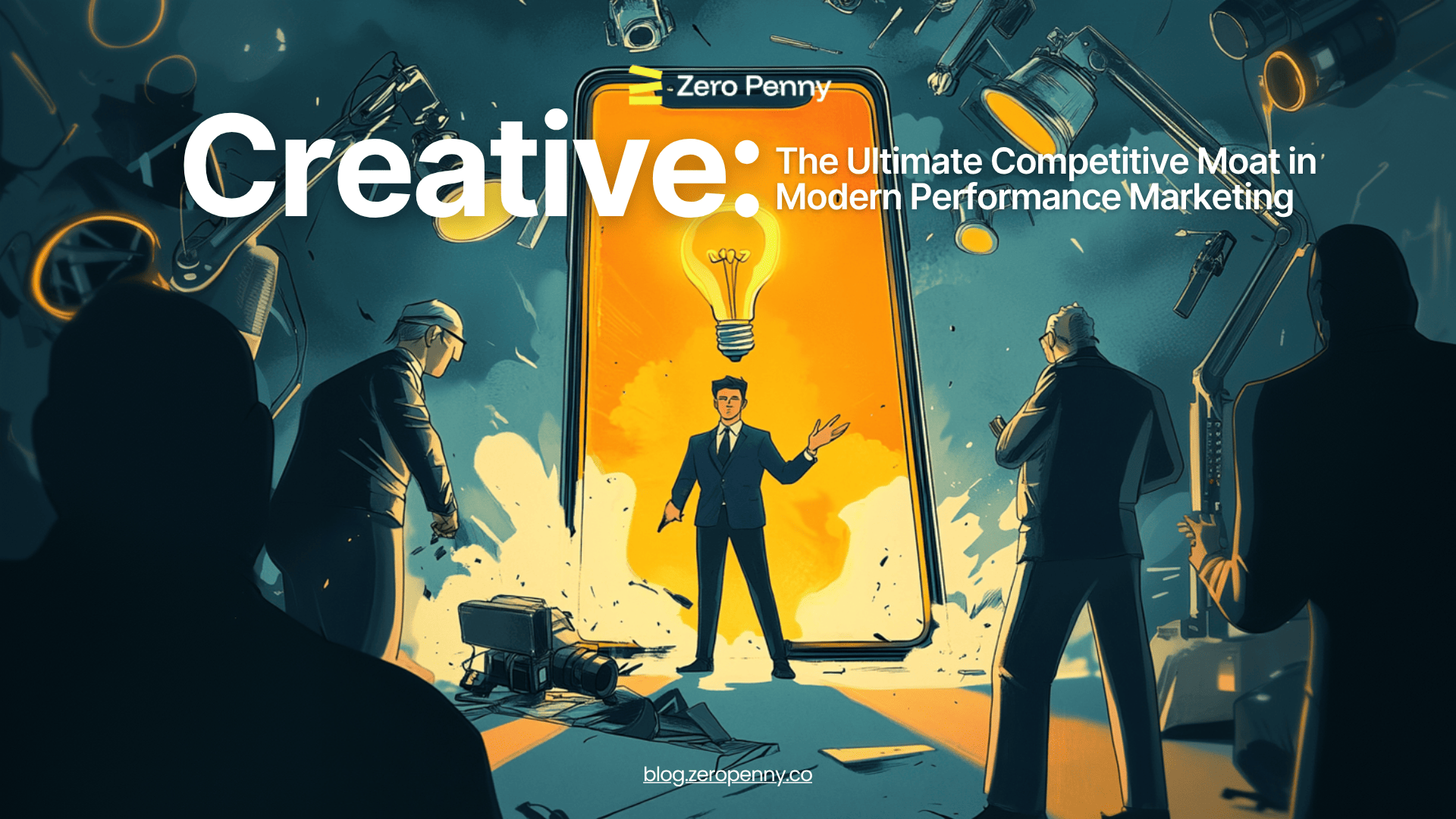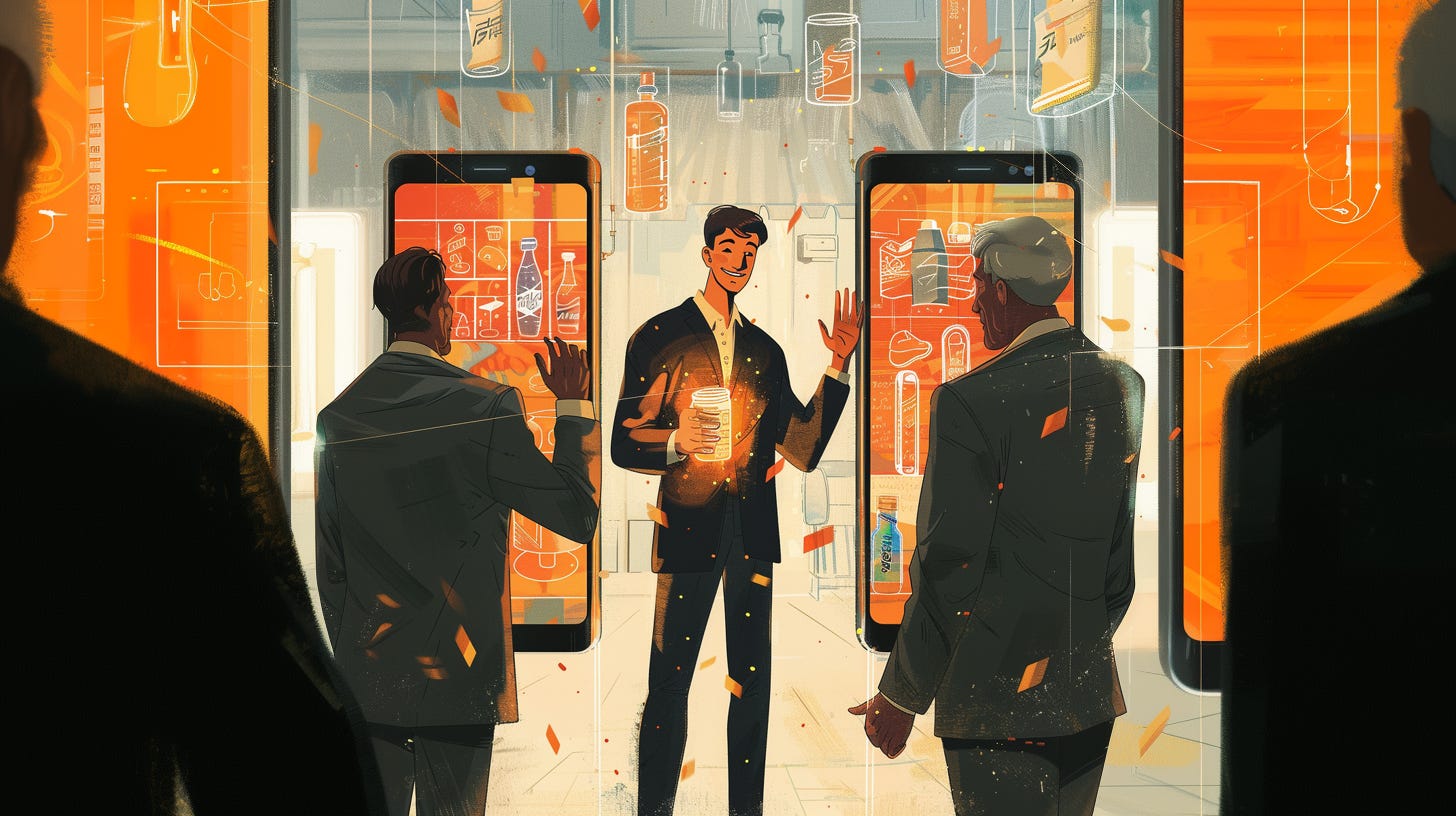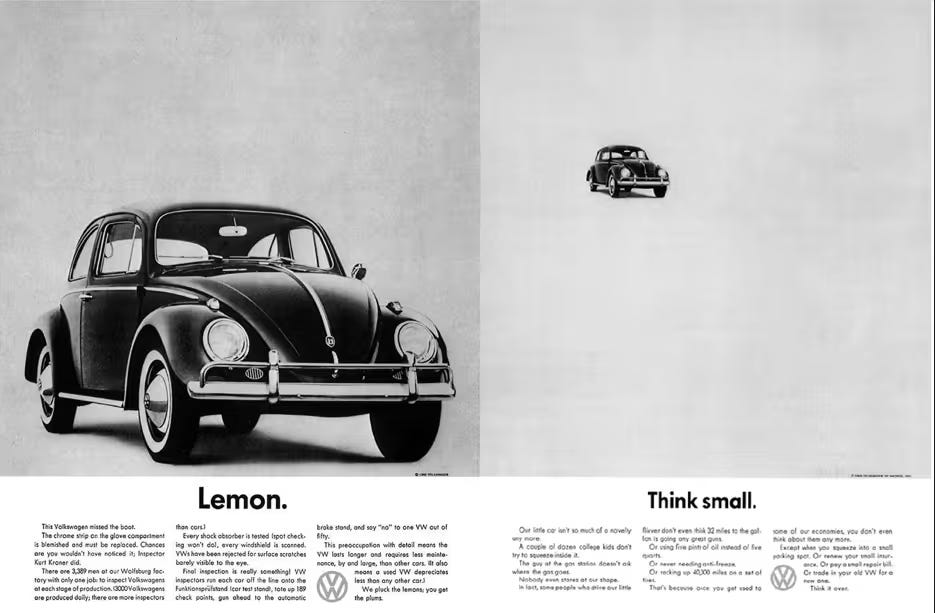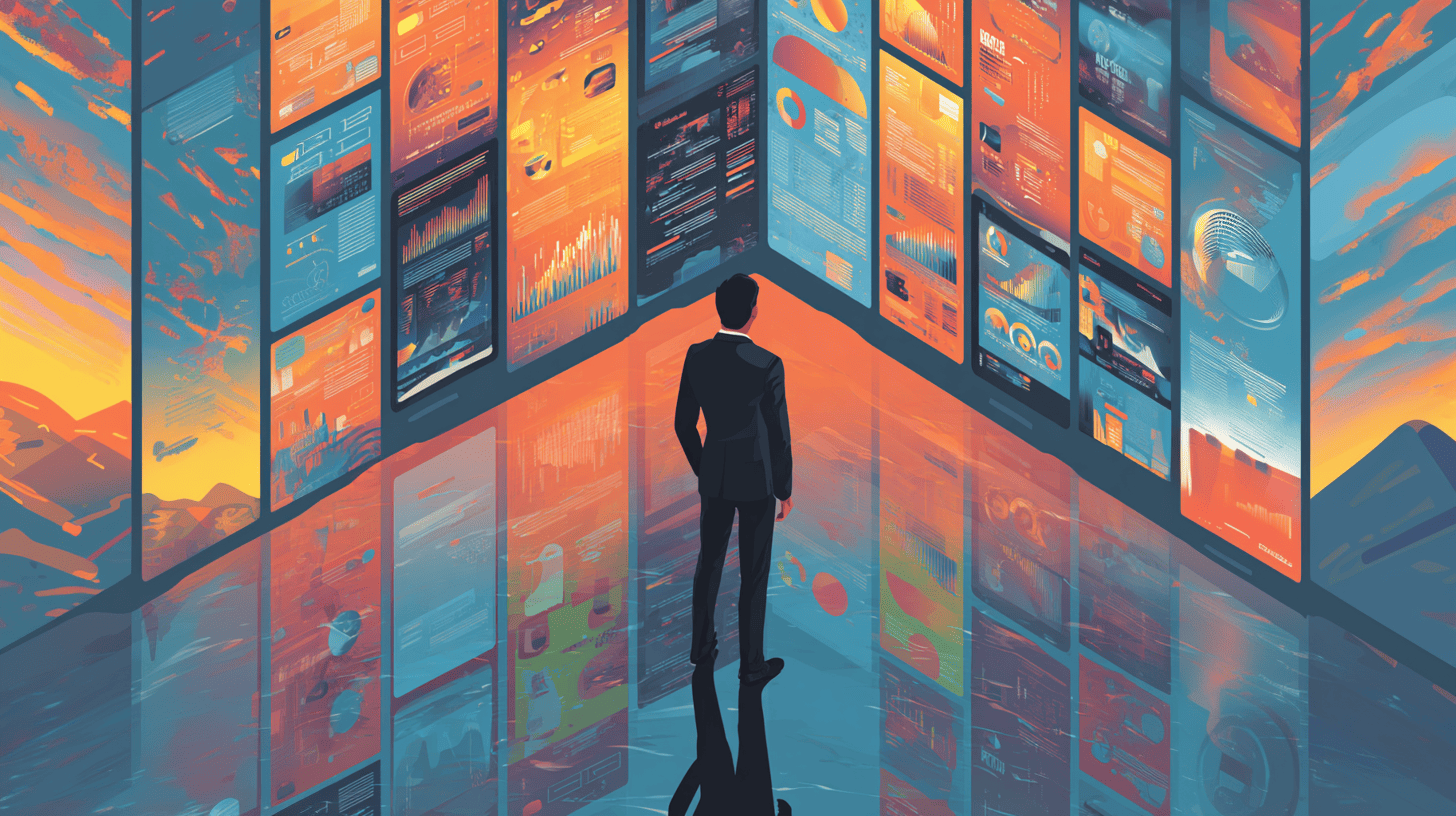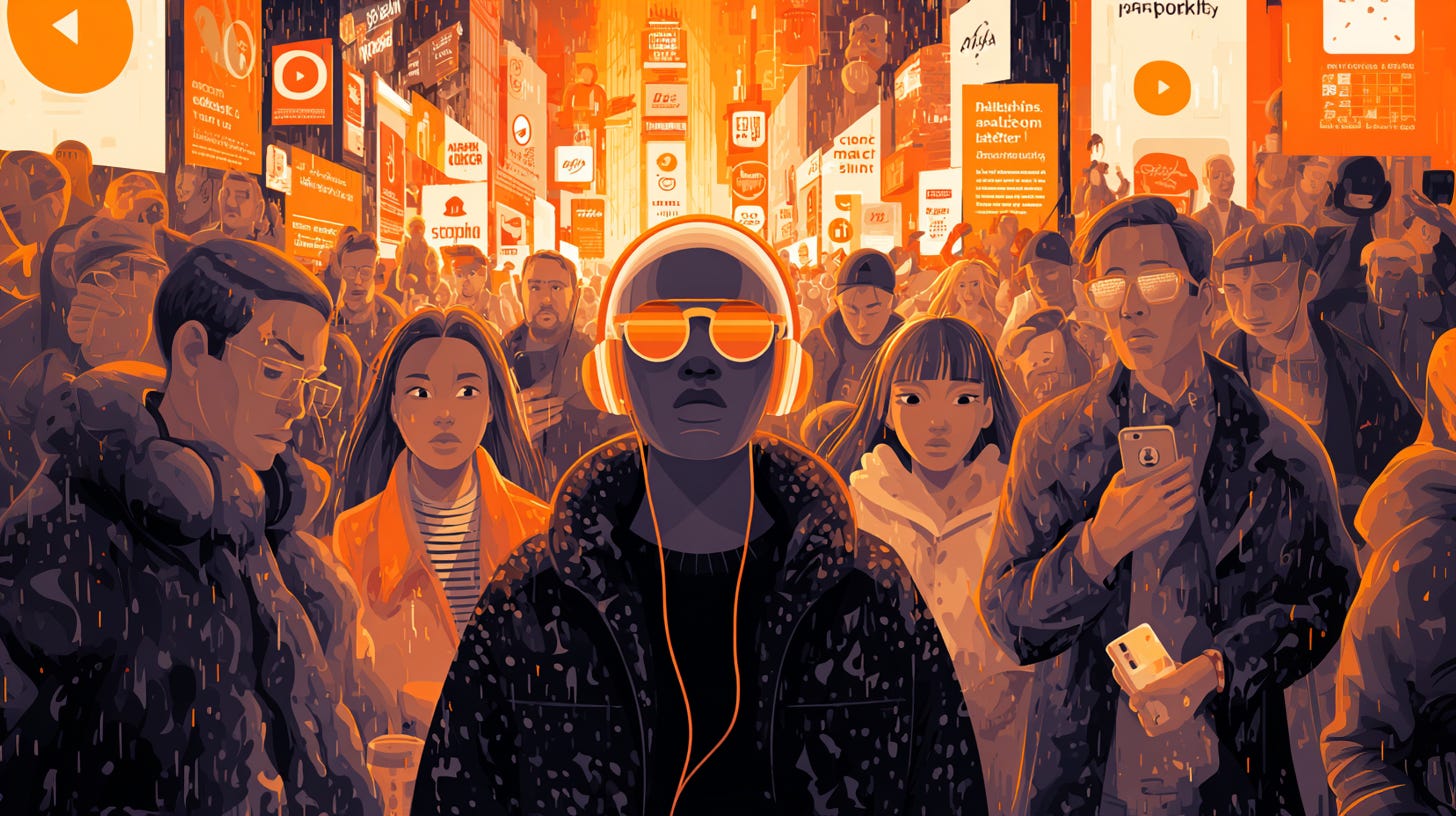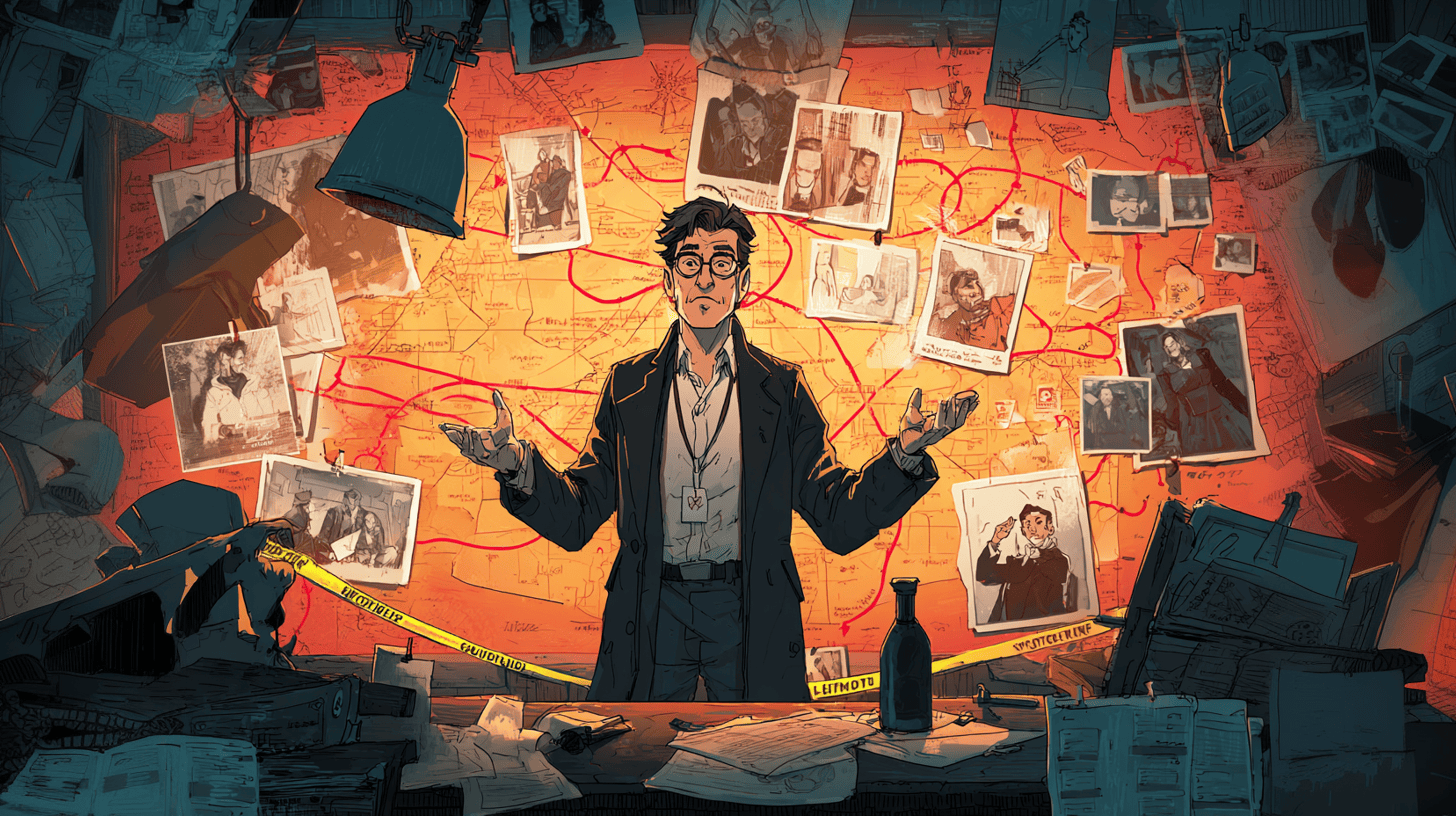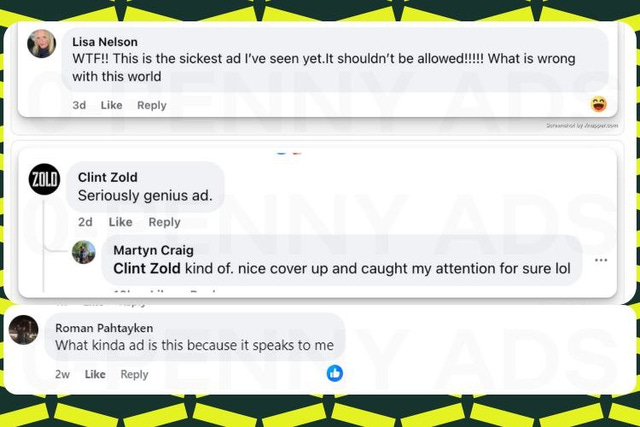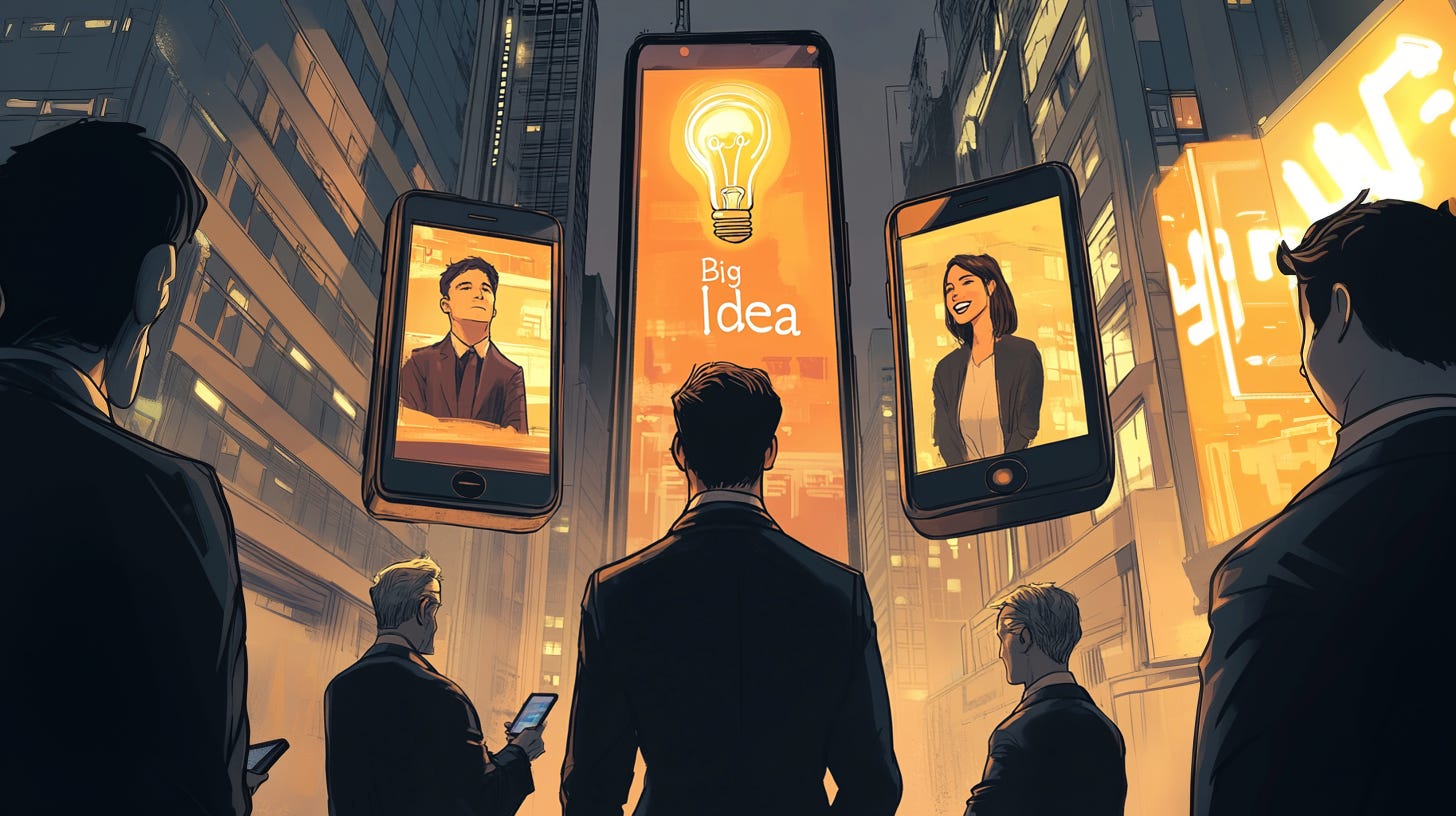Creative: The Ultimate Competitive Moat in Modern Performance Marketing
A deep dive into why creative is the most powerful lever in modern performance marketing.
In an era of data overload and AI-driven ad platforms, one element stands out as a defensible competitive moat for marketers: creative.
The advertisements that truly resonate — those that make you stop scrolling — are the ones that drive superior performance.
This isn’t a new concept; in fact, it echoes a truth from advertising’s past:
Great creative has always been central to impactful marketing.
But today, with automated algorithms handling the heavy lifting of targeting and optimization, creative has become arguably the most important differentiator for campaign success.
Below, we’ll explore why creative is king again — drawing parallels to the golden age of advertising, examining consumer attitudes and psychology, and sharing data (and a case study) that show how scroll-stopping, psychology-driven creative can elevate performance marketing.
The Golden Age of Advertising: When Creative Was King
The idea that creative makes the campaign is as old as modern advertising itself.
Consider the golden age of print advertising in the 1960s — the “Mad Men” era — when a single brilliant concept could transform a brand’s fortunes.
Iconic campaigns from that time, like Volkswagen’s cheeky “Lemon” and “Think Small” ads or Avis’s “We Try Harder” slogan, became cultural touchstones. In that era, great creative was the key to grabbing attention. There were fewer targeting tricks or algorithmic optimizations available; an ad had to rely on a compelling idea and clever execution to stand out in magazines and newspapers.
Advertising lore from those days often boils down to a simple formula:
A good ad sells, a bad ad doesn’t.
As a Nielsen analysis put it:
“It wasn’t too long ago that creative was the most important part of the mix by far. It was a pretty simple formula: Good creative sold products, bad creative didn’t.”
In fact, even as recently as 2006, research (Project Apollo) found that 65% of a campaign’s sales lift came from the creative element alone.
The parallels to today are striking.
Just as in the golden age of print and TV, a strong creative concept can cut through noise. The difference is that now the “noise” is digital clutter rather than a crowded newsstand.
The lesson from history remains relevant:
Marketing breakthroughs happen when creativity leads.
Modern performance marketers are, in a sense, rediscovering what legends like David Ogilvy and Bill Bernbach knew decades ago — that a big idea and engaging content can be a brand’s greatest advantage.
Why Consumers Tune Out Ads Today
If creativity is more important than ever, it’s largely because consumers have tuned out a lot of advertising.
People are bombarded with countless ads every day, and over time, they’ve developed defenses against anything that feels like “just another ad.”
Consider some recent findings on consumer attitudes:
Ad overload:
Nearly 3 out of 4 internet users (74%) feel there are too many ads online, a figure that climbs to 78% for people over age 35. With such volume, each individual ad faces an uphill battle for attention.Repetition fatigue:
63% of users say they keep seeing the same ads over and over. This familiarity breeds contempt — people get ad fatigue when exposed to the same creative too often.Ignoring banners:
An overwhelming 86% of consumers suffer from banner blindness, meaning they consciously or subconsciously ignore banner-like advertisements on webpages. Vast swaths of display ads are simply not seen or noticed.Distrust and skepticism:
Around 90% of consumers say they don’t fully trust advertising. Years of lofty claims and “cheap gimmicks” have made audiences skeptical of marketing messages. In one study, 70% of consumers said no ad they see in a given day is likely to change their mind about a product — a sign of hardened persuasion resistance.
Poor creative = ad fatigue + brand damage
These statistics paint a clear picture: consumers are both ad-weary and ad-wary.
The typical person has learned to filter out or outright avoid a lot of ads.
This avoidance has a psychological basis. Banner blindness is a prime example — web users have internalized what ad placements look like (usually a banner at the top or side of a page), and their eyes literally skip over those areas as they focus on content.
One study found the average click-through rate for banner ads is only 0.35%, and over 80% of users ignore banner ads entirely.
Similarly, ad fatigue sets in when the same creative is seen multiple times; the brain starts tuning it out due to overexposure.
This isn’t just a harmless side effect — it can actively hurt marketing results.
In a recent survey, 61% of consumers said seeing the same ad back-to-back makes them less likely to purchase from that company.
Nearly half have decided not to buy something because an ad annoyed them with too much repetition.
In other words, overusing the same creative can drive potential customers away.
Another factor is erosion of trust.
People today are highly sensitive to anything overtly “salesy.” Persuasion research calls this “persuasion knowledge” — consumers know when they are being marketed to, and it triggers skepticism.
According to HubSpot research:
91% of people feel ads are more intrusive now than a few years ago
79% are concerned they’re being tracked by retargeted ads
They’re hyper-aware of promotional tactics, whether it’s a glossy banner or an influencer post with a #ad tag.
The result is a sort of cognitive armor: the default reaction to an obvious advertisement is distrust or indifference.
Little wonder that traditional ads are struggling to break through.
If an ad doesn’t offer immediate relevance or authentic value, people will scroll right past or hit “skip.”
For marketers, this consumer mindset poses a challenge:
Conventional, formulaic ads are largely falling on deaf ears.
Banner blindness, ad fatigue, and distrust mean that simply showing up in someone’s feed or on a webpage isn’t enough — how you show up matters immensely.
This is where creative quality and ingenuity come to the forefront.
To get a jaded audience to pay attention, an ad must not look or feel like the very ads they’re conditioned to ignore.
In the Age of Algorithms, Creative Is the Only Differentiator
Modern digital advertising has become highly automated. Targeting the right audience is now often a matter of choosing a few settings (or even letting the platform decide).
Algorithms, lookalike modeling, and broad targeting options on platforms like Facebook and Google have commoditized the media buying process.
Every advertiser has access to the same powerful optimization engines that automatically test combinations of audience segments, placements, and bids to find what converts.
As this “machine” side of marketing gets more advanced, the human side — the creative message and visuals — emerges as the key variable that distinguishes winners from losers.
Think about Facebook ads as an example.
These days, many advertisers opt for broad targeting, essentially telling Facebook’s AI to find the best audience for their ad with minimal manual constraints.
Facebook’s own best practices now encourage giving the algorithm free rein:
✔️ provide lots of creative assets
✔️ use broad audience parameters
✔️ let the system optimize delivery
In this model, your ad creative does most of the heavy lifting — in finding and converting the right people.
The platform observes who engages with the creative... then seeks more users like them.
“In the broad targeting model, your ad creative does most of the heavy lifting. The more your ad creative resonates with a specific audience segment, the faster Facebook hits your first dot (conversion).”
In other words:
Creative is the X factor that determines whether the algorithm can efficiently find an audience and drive results.
The data backs it up.
Nielsen Catalina found that 47% of sales lift from advertising comes from the creative — more than targeting, placement, or frequency.
Another analysis showed creative accounts for 56% of variance in sales lift across Facebook and Google campaigns.
So if two brands have the same budget, same targeting, same platform...
The one with the better creative wins.
Algorithms = equal playing field.
Creative = your moat.
And despite all the tech and tools, veteran marketers still say it:
“Creative is still king.”
Even with precise targeting and programmatic bidding, weak creative still tanks campaigns.
No amount of AI can fix a bad message.
As Nielsen put it:
“Weak creative results in weak sales lift.”
Strong creative? Higher lift. Less dependent on media inputs.
💡 Better creative multiplies everything else you do.
And here’s the kicker:
Everyone’s using AI bidding.
Everyone’s using lookalikes.
Everyone’s tweaking the same dials.
Those aren’t advantages anymore — they’re table stakes.
But no one can steal your unique idea.
No one can replicate your storytelling.
No one can copy your brand’s creative fingerprint.
That’s why the smartest brands today treat creative as a strategic asset.
They test relentlessly.
They play with formats, angles, stories.
They know performance marketing is no longer a numbers game — it’s a creative game.
And they’re building a moat that competitors can’t cross.
Case Study: The Power of Organic-Feeling Creative
A social media user’s tongue-in-cheek comment – “This ad should be illegal” – on one of our client’s ads demonstrates the impact of a well-crafted creative that doesn’t feel like a typical ad.
To illustrate how great creative can overcome consumer skepticism, consider a recent campaign our agency produced for a client. The client, a brand in the personal care space, needed to drive online sales for a new product.
Rather than create a standard promotional ad, we took an unconventional, narrative approach: we designed the ad to look and feel like an intriguing piece of content users might come across in their feed — not an advertisement.
In fact, we styled it like a mini “true crime” story video — complete with suspenseful storytelling, playful crime scene visuals, and a twist of humor — subtly tying in the product as part of the narrative payoff. Nowhere did it outright say “Buy now” or use clichéd ad tropes; it was content first, marketing second.
The results were striking.
Not only did the campaign drive a strong increase in click-through and conversion rates (well above the client’s previous benchmarks), but it also generated a level of positive user engagement rarely seen with ads.
On social media, viewers left comments you’d expect under an entertaining viral post — not a paid advertisement.
One user famously joked,
“This ad should be illegal,”
implying it was so good it felt almost unfair to other content.
Another commented that they “almost didn’t realize it was an ad at first.”
These reactions underscore how organically the creative blended in with user-generated content. By not screaming “I’m an ad,” the promotion disarmed the audience’s defenses and held their attention long enough to deliver its message.
This case study shows the power of a psychology-driven creative strategy.
We tapped into storytelling principles — curiosity, surprise, humor — to engage the audience’s emotions and cognitive interest, rather than just their consumer radar.
The ad’s format capitalized on native design — it looked like a regular post one might share with friends — which helped bypass banner blindness and skepticism.
Once viewers were hooked by the story, the subtle integration of the product felt natural rather than forced.
The campaign not only achieved its immediate performance goals (sales), but also gave the brand a boost in likability and memorability, as evidenced by the enthusiastic comments and shares.
In essence, the creative earned attention by providing entertainment value, which in turn drove business value.
For marketers, the takeaway is clear:
Creative which feels authentic and organic can dramatically outperform overtly “salesy” ads.
Especially on platforms like Facebook, Instagram, or TikTok — where ads intermingle with personal content — blending in to stand out is a winning tactic.
This doesn’t mean deceiving the audience — it means respecting the audience’s experience.
If an ad is enjoyable or useful in its own right, people won’t mind that it’s an ad.
In fact, they’ll reward it with attention, engagement, and even goodwill (as our client’s ad proved).
Crafting this kind of creative requires:
Understanding the target audience deeply — their interests, humor, and the psychology of what hooks their attention
Having the courage to break from traditional ad formulas
When done right, it builds a moat that numbers-driven optimizations alone cannot replicate.
Big Ideas Beat Big Budgets
One common misconception in marketing is that higher production value automatically means better performance.
It’s easy to assume that a slick, big-budget commercial will outperform a scrappier, low-budget ad.
In reality, production cost does not equate to success – and in many cases, simpler, cost-effective creative outperforms the polished pieces.
This is an important principle for scalable performance marketing:
You don’t need Super Bowl-level spend; you need Super Bowl-level ideas.
Digital consumers often prefer ads that feel authentic, relatable, or novel over ads that feel highly produced or “corporate.”
Excessive polish can actually signal “this is an ad,” triggering skepticism.
On the flip side, an ad shot on a smartphone or a meme-style graphic can come across as more genuine.
There’s plenty of anecdotal evidence among advertisers that an iPhone video can beat a Hollywood-style production in driving conversions.
As one performance marketing expert noted:
“One would assume that the production value of creative plays an important role but, quite often, it has nothing to do with the performance. It can be the opposite actually – sometimes the simplest ads are the best-performing ones.”
In our own experience, we’ve seen user-generated content and lo-fi videos significantly outperform studio-produced ads — likely because they feel more real to the viewer.
Investing wisely in creative means focusing on strategy and testing, not just production bells and whistles.
A cost-effective creative process might involve:
Rapidly prototyping many variations of an ad
Testing different visuals, messages, formats
A/B testing to see what resonates
Rather than pouring everything into one “perfect” commercial, this agile approach acknowledges a crucial truth:
Even seasoned creatives can’t predict with 100% certainty which concept will catch fire.
Producing a range of ideas on a modest budget can yield better insights and results than betting it all on a single execution.
📈 Data from performance campaigns shows:
Most new ad concepts fail to outperform the control — but a few winners can drive the majority of results.
By generating lots of ideas affordably, marketers increase their odds of finding those winners.
Moreover, a cost-effective creative strategy is essential for scaling.
High-production ads not only cost more to make — but if they fatigue the audience (which all ads eventually do), you face a high cost to produce the next one.
In contrast, if you build a pipeline of lower-cost, high-quality creatives, you can refresh campaigns continuously without breaking the bank.
This was highlighted by a mobile gaming advertiser who noted that while they could spend hundreds of thousands on a single live-action ad, it often made more sense to churn out many clever, “silly-looking” ads instead — because the simpler concepts sometimes performed best and could be replaced quickly when fatigue set in.
The lesson: agility and creativity trump lavish production in the day-to-day trench of performance marketing.
None of this is to say production value doesn’t matter at all.
The quality of an ad’s execution should be appropriate for its context and audience.
But beyond a baseline level of clarity and professionalism, spending more on production yields diminishing returns in persuasion.
A great idea will shine through even with minimal production,
whereas a weak idea can’t be saved by cinematic visuals.
Marketers should therefore calibrate their budgets to invest in:
Creative talent
Research
Iterative testing
— the things that lead to great ideas — rather than assuming that pouring money into a single ad guarantees success.
Scalable marketing relies on a sustainable creative engine — one that can generate winning ads repeatedly and cost-efficiently.
Conclusion: Building a Creative Moat in the Era of Optimization
Amid all the algorithms, analytics dashboards, and targeting tools that define modern marketing, it’s easy to lose sight of the fact that we are ultimately speaking to human beings.
What sways those humans are not just numbers on a screen, but stories, emotions, and experiences – all of which are delivered through creative execution.
As we’ve seen, the data and trends in 2024–2025 overwhelmingly suggest that creative is the linchpin of performance. Consumers have learned to tune out the bland and the generic; they reward the brands that dare to be creative with their attention and trust.
For brands and marketers, the implication is clear:
To build a durable competitive moat, invest in better creative.
This means elevating the role of creative strategy in your performance campaigns to be on par with (or even above) your media strategy.
It means crafting ads that stop the scroll, by resonating with audience psychology and offering something more than a sales pitch – whether that’s humor, valuable information, or a compelling narrative.
The goal is to make your marketing so engaging that it doesn’t feel like “marketing” in the moment;
it just feels like content worth consuming.
Achieving this consistently is no small feat, but that’s exactly why it’s a defensible advantage.
Few companies manage to hit that sweet spot — those that do enjoy outsized returns on their ad spend.
It’s also important to foster a test-and-learn culture around creative.
Treat each ad as an experiment from which you gather data on:
what visuals connect best
which messages resonate
what emotional tones trigger response
Over time, this builds a proprietary knowledge base of what creative approaches work for your brand and why.
That knowledge, combined with skilled creative execution, becomes an asset competitors can’t easily copy.
Your competitors might see your ads performing, but they won’t know the psychological insights or creative nuances underlying their success.
In short, you develop a creative moat — the ability to consistently produce advertising that performs above the norm.
Our agency firmly believes in this creative-first philosophy.
It’s why we’ve made expertise in psychology-driven, scroll-stopping ad creatives the cornerstone of our approach.
By blending data (on consumer behavior and preferences) with the art of storytelling and design, we aim to craft campaigns that not only hit performance targets but also enhance brand equity and consumer trust.
We’ve seen first-hand, through campaigns like the true-crime themed ad above, how the right creative concept can transform skepticism into curiosity and apathy into action.
It reinforces our conviction that in today’s marketing landscape, creative isn’t just a variable – it’s the variable that determines whether a campaign merely spends money or actually moves the needle.
In conclusion, the state of modern performance marketing can be summarized like this:
When everyone has the same data and algorithms, doing the “math” well is no longer enough.
It’s the “magic” – the creative spark that captures the imagination – that drives breakout success.
The golden age of advertising taught us the power of a big idea, and today’s digital age is proving it again on a grand scale.
By doubling down on creative excellence and innovation, brands can build a moat that protects their customer growth and propels their marketing efficiency, no matter how the platforms or policies change.
In the end, human creativity remains the one thing that machines and formulas can’t commoditize – and that makes it the most important asset in modern marketing.
Sources:
Nielsen (NCSolutions) on creative’s contribution to sales lift
Harvard Business Review on impact of highly creative campaigns
SurveyMonkey (2021) on consumer attitudes toward social media ads
Wistia/HubSpot on intrusiveness and tracking concerns
EP+Co (2024) study on consumer trust in advertising
MonetizeMore on prevalence of banner blindness
Readpeak/Nielsen Norman on banner blindness behavior
MediaPost/Harris Poll on ad fatigue effects
TripleWhale on Facebook broad targeting and creative’s role
Medium (Nebojsa Radovic) on production value vs. performance
We Are MBC on 1960s creative advertising examples
Nielsen (2017) on “good creative sold products, bad creative didn’t”
Your edge isn’t tech—it’s the idea.
1-tap message us:
• Telegram – https://gozp.ad/telegram• WhatsApp – https://gozp.ad/whatsappStay ahead of the algorithms.



